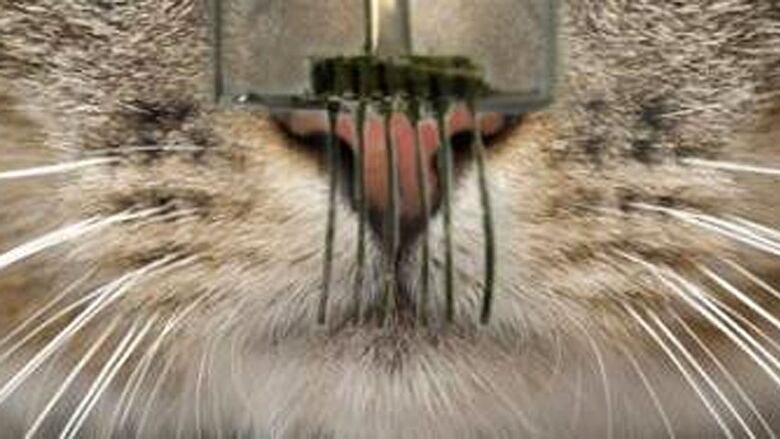'E-whiskers' could give robots cat-like senses
Highly sensitive networks respond to slightest pressure

California scientists have developed electronic "whiskers" sensors similar to cat whiskers that they say could help robots see and feel their surroundings.
Researchers from the Berkeley Lab and the University of California Berkeley made the e-whiskers from elastic fibres coated with carbon nanotube paste to form an electrically conductive network matrix thats also bendable.
A thin film of silver nanoparticles was added to make the matrix sensitive to strain.
The new e-whiskers respond to even the slightest pressure about the same thats applied to a table when a dollar bill is placed on it.
Cat whiskers dont solely exist to make them look cute. They actually act as sensors, and help cats cope with poor eyesight. Whiskers can sense small changes in wind and help animals navigate through small, dark spaces.
Measuring pulse rate
Lead researcher Ali Javey, an associate professor of electrical engineering and computer science at the University of California Berkeley, is excited about the potential uses for the biological-inspired technology.
The ease of fabrication, light weight and excellent performance of our e-whiskers should have a wide range of applications for advanced robotics, human-machine user interfaces, and biological applications, he said in a press release.
Lightweight and wearable sensors could detect joint movement and measure heartbeat and pulse rate, the team said. They also used the e-whiskers to make 2D and 3D maps of wind flow.
An article about the electronic whiskers was published in Proceedings of the National Academy of Science.
Javey and his fellow researchers also created electronic skin for robotic limbs last year, a skin that responds to touch by lighting up.












_(720p).jpg)


 OFFICIAL HD MUSIC VIDEO.jpg)
.jpg)



























































































